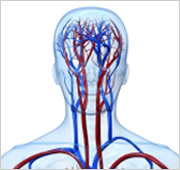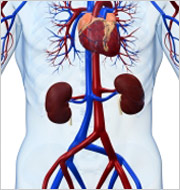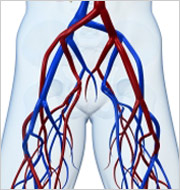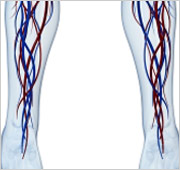Carotid Artery Stenosis
 Carotid artery stenosis, a condition affecting the vessels in the neck that provide blood flow to the brain, is a leading cause of strokes. Stroke is the third leading cause of death in this country[i], with a significant annual cost to care for the disability caused by the event. Unfortunately, the majority of patients who have a stroke that results from carotid artery disease have no advanced warning. Many people do not understand the significance of risk factors for carotid disease, so they do not seek proper medical attention.
Carotid artery stenosis, a condition affecting the vessels in the neck that provide blood flow to the brain, is a leading cause of strokes. Stroke is the third leading cause of death in this country[i], with a significant annual cost to care for the disability caused by the event. Unfortunately, the majority of patients who have a stroke that results from carotid artery disease have no advanced warning. Many people do not understand the significance of risk factors for carotid disease, so they do not seek proper medical attention.
Abdominal Aortic Aneurysms
 Abdominal aortic aneurysms affect the abdominal aorta, the large blood vessel that carries blood through the abdomen. Aneurysms are found in 5-7 percent of people over 60 years old in the U.S., but rarely produce symptoms until they rupture. Ruptured aneurysms cause death in 90 percent of cases[ii], making these events the 13th leading cause of death in the U.S.[iii] Screening for aneurysms to prevent ruptures is particularly important for those patients with a family history of these events and elderly patients (particularly males) with a history of smoking and hypertension.
Abdominal aortic aneurysms affect the abdominal aorta, the large blood vessel that carries blood through the abdomen. Aneurysms are found in 5-7 percent of people over 60 years old in the U.S., but rarely produce symptoms until they rupture. Ruptured aneurysms cause death in 90 percent of cases[ii], making these events the 13th leading cause of death in the U.S.[iii] Screening for aneurysms to prevent ruptures is particularly important for those patients with a family history of these events and elderly patients (particularly males) with a history of smoking and hypertension.
Renal Artery Disease
 Renal artery stenosis occurs when renal arteries, which carry blood to the kidneys, narrow or become blocked. This may result in kidney failure or high blood pressure (hypertension). The condition is common in older Americans, is rarely detected before complications occur, such as kidney failure and severe hypertension. In selected individuals, treatment with angioplasty and stent may reduce blood pressure and preserve renal function.
Renal artery stenosis occurs when renal arteries, which carry blood to the kidneys, narrow or become blocked. This may result in kidney failure or high blood pressure (hypertension). The condition is common in older Americans, is rarely detected before complications occur, such as kidney failure and severe hypertension. In selected individuals, treatment with angioplasty and stent may reduce blood pressure and preserve renal function.
Extremity Arterial Stenosis
 Extremity artery stenosis, a type of peripheral arterial disease (PAD), is caused when plaque builds up in the arteries, decreasing the flow of oxygen and nutrients to the muscles and tissues of the legs and feet. PAD affects up to 12 million Americans, and the vast majority of patients do not know they have the disease. Dare to CARE helps uncover PAD and while most patients can be treated effectively with conservative measures, such as exercise programs and treating hypertension or diabetes, it is critical to identify asymptomatic patients who may be at risk for greater complications. PAD is a significant marker for heart disease and stroke therefore patients with PAD need aggressive risk factor management.[iv]
Extremity artery stenosis, a type of peripheral arterial disease (PAD), is caused when plaque builds up in the arteries, decreasing the flow of oxygen and nutrients to the muscles and tissues of the legs and feet. PAD affects up to 12 million Americans, and the vast majority of patients do not know they have the disease. Dare to CARE helps uncover PAD and while most patients can be treated effectively with conservative measures, such as exercise programs and treating hypertension or diabetes, it is critical to identify asymptomatic patients who may be at risk for greater complications. PAD is a significant marker for heart disease and stroke therefore patients with PAD need aggressive risk factor management.[iv]
[i] Centers for Disease Control and Prevention. About Stroke. http://www.cdc.gov/stroke/
[ii] AHA Heart Disease and Stroke Stats, 2010 Update. http://www.ndhealth.gov/heartstroke/image/cache/AHA_Heart_Disease_and_Stroke_Stats_2010_Update.pdf
[iii] Fillit: Brocklehurst’s Textbook of Geriatric Medicine & Gerontology, 7th ed. Found on ClinicalKey. https://www.clinicalkey.com/topics/surgery/abdominal-aortic-aneurysm.html
[iv] National Heart, Lung and Blood Institute. Facts about Peripheral Arterial Disease. http://www.nhlbi.nih.gov/health/public/heart/pad/docs/pad_extfctsht_general_508.pdf